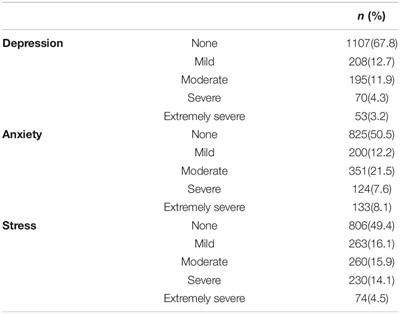 Photo Courtesy: Fiordaliso/Getty Images
Photo Courtesy: Fiordaliso/Getty Images
Psychoanalytic theory examines personality organization and the dynamics of personality development. The term and theory originated with Austrian neurologist Sigmund Fred in the late 19th and early 20th centuries. According to Great Ideas in Personality, one of the greatest strengths of psychoanalytic theory is that it can be used to explain the nature of human development and all aspects of mental functioning. However, critics of psychoanalytic theory claim that it grossly exaggerates and generalizes human behavior. This article will examine the history and development of psychoanalytic theory as well as many of the key concepts and terms involved.
Freud’s Psychoanalytic Theory
The Oxford English Dictionary describes psychoanalysis as
A therapeutic method, originated by Sigmund Freud, for treating mental disorders by investigating the interaction of conscious and unconscious elements in the patient’s mind and bringing repressed fears and conflicts into the conscious mind, using techniques such as dream interpretation and free association. Also: a system of psychological theory is associated with this method.
 Photo Courtesy: Bettmann/Getty Images
Photo Courtesy: Bettmann/Getty Images
Sigmund Freud first coined the term “psychoanalysis” in 1896, when he was 40 years old. Freud saw psychoanalysis as a kind of therapy for treating mental illness, as well as explaining the intricacies of human behavior by focusing on the mind’s unconscious. Specifically, he posited that what a person goes through as a child plays a significant role in shaping their personality and behavior as adults, often in ways that may not be immediately obvious.
At the root of Freud’s psychoanalytic theory is a specific goal: to bring the contents of a person’s unconscious or subconscious mind to the level of consciousness, where they can be examined and better understood. He believed that people often had repressed emotions buried so deep that they couldn’t be readily accessed. The work of a psychoanalyst is to help a patient uncover repressed memories and emotions through interrogation and conversation and then use whatever new knowledge comes to light to treat the patient’s mental illness and neuroses.
Freud graduated with his medical degree in neurology in 1881 and set up a private practice shortly thereafter where he treated patients with psychological disorders. However, it wasn’t until his teacher and colleague, Josef Breuer, treated “Anna O” that Freud saw his career take a meaningful turn. The case of Anna O, which Breuer shared with Freud, was significant because Breuer claimed his psychoanalytic treatment worked to ease or eliminate her symptoms.
Anna O was diagnosed with hysteria, and suffered from symptoms like hallucinations, paralysis, and convulsions, all without a known physical cause. Because of her treatment with Breuer, Anna O was able to recall repressed memories and traumatic events from her past, which, Breuer claimed, cured Anna O of her paralysis.
As a result, Freud experienced a “lightbulb moment” when Breuer shared Anna O’s story with him. Freud believed that physical symptoms often had repressed emotions and traumas at their root. Before Freud’s epiphany, no one had really constructed a cohesive theory to examine how or why repressed traumas might manifest in such physical ways.
Psychoanalytic Model
Freud’s psychoanalytic model separates the mind into three sections: conscious, preconscious, and unconscious. The conscious mind contains current thoughts, feelings, and attention, while the preconscious mind, more commonly referred to as the subconscious, contains information that we can remember and retrieve from our memories. According to Freud, the unconscious mind exists at a deeper level, and is the place where we store the mechanisms that drive our behavior, including our inherent desires and instincts.
ADVERTISEMENT
Later in his career, Freud developed an even more complexly structured model of the mind that evolved out of the three levels of consciousness he had previously theorized. Once again, his model divided the mind into three layers.
- The id is part of the unconscious mind. It works at an unconscious level based on instinct. Freud said that human biological instincts have two kinds of functioning: Eros activates life-sustaining behaviors. It is the instinct to survive. Thanatos, the death instinct, is its opposite. It activates aggressive and destructive activity.
- The ego begins development during infancy. It works in service of the id while also acting as a check-and-balances system on the ids instinctual urges. The ego makes sure we behave in ways that are socially acceptable.
- The superego, also part of the unconscious mind, is home to our sense of morality. It advocates for morally based, principled action.
 Photo Courtesy: mediaphotos/Getty Images
Photo Courtesy: mediaphotos/Getty Images
Psychoanalytic Approach
Freud’s psychoanalytic approach was largely based on his model of the human mind. In practice, he operated with the belief that the id, ego, and superego were always acting in conflict with one another because of their contrasting primary goals, hence our reliance on mental defense mechanisms.
ADVERTISEMENT
ADVERTISEMENT
 Photo Courtesy: Hello World/Getty Images
Photo Courtesy: Hello World/Getty Images
Defense mechanisms are the processes by which the mind tries to avoid conscious conflict or anxiety, often in unconscious ways. For example, Freud believed that repression was a defense mechanism of the ego to protect the conscious mind from disturbing thoughts. He also posited that projection, another defense mechanism, was the ego’s solution to having improper thoughts and feelings – the mind attributes these improper thoughts and feelings to another person so that the mind doesn’t have to directly confront or accept them.
In practice, psychoanalysis focused on the unconscious mind — not the conscious mind. As the field of psychology has developed and transformed over the years with new scientific research and insights, experts have developed modern talk therapy, which has some roots in Freud’s original psychoanalytic model.
Strengths of Psychoanalytic Theory
Patients looking to dive deep into their psyche to understand the motive of their behaviors often find psychoanalysis useful and therapeutic. Furthermore, patients who want to understand and deal with certain experiences that have left them confused might also find value in psychoanalysis.
ADVERTISEMENT
By design, psychoanalysis is a long, drawn-out, intensive treatment that can provide a lot of insight into what drives a person’s behavior. Long-term, deeply analytical therapy has been shown to have subsequent long-term positive results. Research has shown that it can be effective for many different mental and behavioral disorders and that the results are further-reaching than medical treatments. This is in part because patients learn life skills during the course of their treatment that they can take with them into their day-to-day lives.
Criticism of Psychoanalytic Theory
On the other hand, Freud’s theory of psychoanalysis has received its fair share of criticism from psychologists, with many claiming that it is based in “pseudoscience” rather than the rigorous quantitative and experimental research that true science demands. As evidence, they point out that Freud used the clinical case study model to defend the legitimacy of psychoanalysis, which does not scientifically verify that psychoanalysis works.
ADVERTISEMENT
Even some psychoanalysts feel that psychoanalysis isn’t science and never had any intention of being science. Those in this camp believe psychoanalysis to be a philosophy that helps to explain some of the connections between childhood events and adult personality and behavior. This definition would make psychoanalysis as a form of professional psychological treatment unethical.
Freud’s theory of psychoanalysis neglects individual differences in patients. Because patients are not all the same, using the same system of psychoanalysis for everyone is likely not the most effective way of treating mental illness. Additionally, psychoanalytic theory is largely based on exploring a person’s childhood and their potential repressed memories from that time. It may not always be the case that the issue stems from something that happened in childhood, which would make psychoanalysis unhelpful for some.
Even taking these criticisms into account, it is widely agreed that psychoanalytical theory has had a huge and often positive impact on the evolution of modern psychology. Without Freud’s psychoanalytic theory, modern-day talk therapy would not exist. While many of Freud’s ideas have been updated or replaced by methods backed by science and research, his groundbreaking contributions to the field of psychology are evident and form the foundation of his enduring legacy.
ADVERTISEMENT
MORE FROM REFERENCE.COM
After working with patients suffering from psychological problems, Sigmund Freud developed psychoanalysis. Its strengths and weaknesses can be tricky to determine, even when discussing his idea. The theory argues that human beings develop in stages, and each developmental stage has its goals. If individuals do not satisfactorily go through any of the stages, they will experience anxieties in the future (Freud, as cited in Montana, 2013). Psychologists use this theory in treating psychological problems that occur in adults.
This report attempts to assess the strengths of psychoanalysis along with its weaknesses.
Role of Facilitator Based on the Psychoanalytic Theory
The main tool for handling problems that patients experience is transference. It helps the patients remember their childhood experiences (Corey, 1990). During the therapy, the therapists should create an environment that is better than the one the patient had while growing up. In case the patient encounters problems because of growing up with uncaring or excessively harsh parents, the therapists should try to be polite and understanding (Corey, 1990). They must provide an environment that helps their patients handle their problems better than they did when they were young.
Therapists also have the responsibility of convincing their patients to cooperate during the therapy. Convincing the patients involves asking the group to behave in a manner that can assure the patients that they are ready to help them handle their problems (Montana, 2013). The therapists should not label the patients uncooperative.
The other core responsibility of the therapist is analyzing the client’s history and linking it to the present. The history of the client is a very important element of psychoanalytic therapy. Therapists must know everything about the client’s past that can have an effect on the present.
Techniques Supported by Psychoanalysis
Transference
Transference entails going back into the client’s past. It helps the client retrieve all the anxieties that arose from the lack of solutions to conflicts that occurred in different development stages. The therapist and the group should help the client in retrieving the occurrences. They should then provide a good environment for the client to solve the conflicts easily.
Free Association
This method involves members of the group speaking out their problems freely. The most common method of free-association is the go-round technique. Members of a group sit on the round table, and each one of them utters the first thing that comes to his or her mind (Corey, 1990). This method reduces the dependency on therapists.
Interpretation
Interpretation is a method that group members and therapists use in analyzing cases of transference, dreams, feelings, and anxieties (Corey, 1990). Therapists apply it in free-association. In the contemporary application of interpretation, the interpreters do not have to give the true meaning of occurrences. They only attempt to give responses that are close to real meanings.
Dream Analysis
Dream analysis is an important skill in group counseling. Dreams express the feelings, pains, fears, and thoughts that an individual tries to suppress (Freud as cited in Corey, 1990). Therapists use this skill in determining their clients’ anxieties, feelings, pains, and thoughts.
Insights and Working Through
Insight is the process through which patients attempt to establish the cause of their problems. It involves a keen analysis of their childhood experiences. On the other hand, working through involves repeating interpretations and striving to overcome resistance.
Strengths of Psychoanalysis
- It clearly explains the process of solving conflicts that arise from childhood
- It allows the group to participate in the therapy as childhood friends of the patient
Weaknesses of Psychoanalysis
- It blames mothers for most of the complications that occur in patients
- It is very expensive for people with low incomes
- It does not provide a long-term solution to the problems clients face
I would use this theory in practice because it helps establish the real cause of the patient’s problems. It also allows the group to participate in solving the problems.
References
Corey, G. (1990). Theory and practice of group counseling. Pacific Grove, Calif.: Brooks/Cole Pub. Co.
Montana, K. (2013). General psychoanalytic field theory: Its structure and application to psychoanalytic perspectives. Psychoanalytic Inquiry, 33(3), 227-292. Web.




